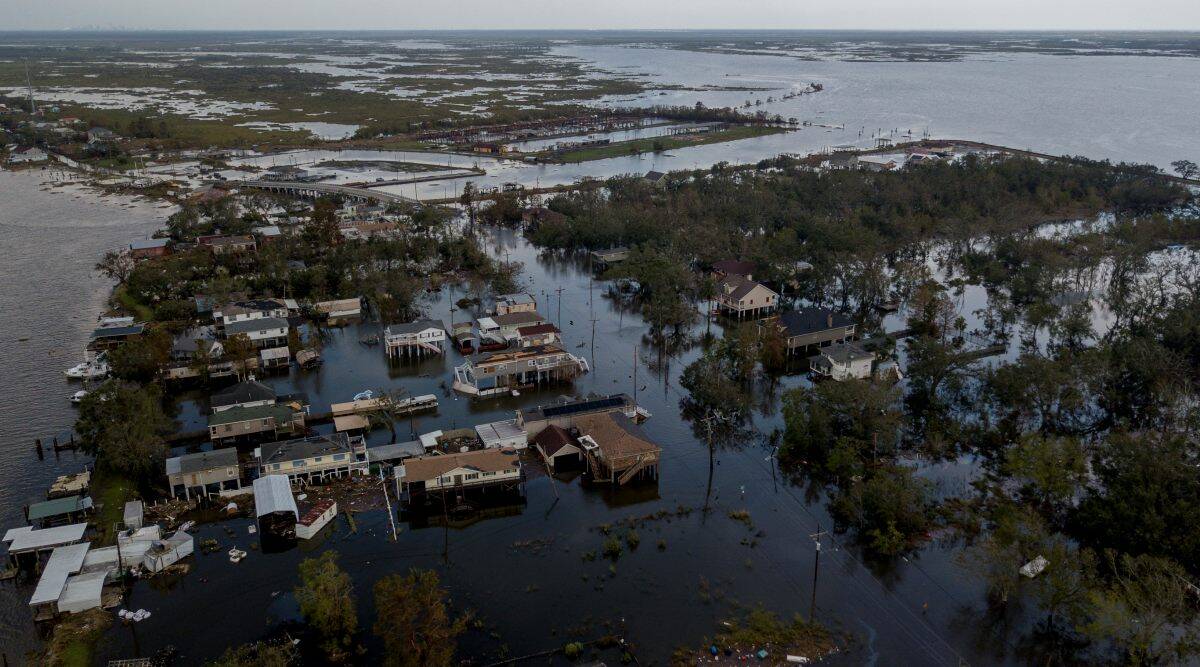New York City is sinking due to the weight of skyscrapers
On average, New York is sinking about 1-2mm above sea level.
Secret clubs of the super-rich in New York
Parking lot collapse in the middle of New York, many people were injured
Donald Trump was interrogated in secret for many hours in New York
Man earns 700 million/year thanks to homestay
Man earns 700 million/year thanks to homestay "in the tree"
Review Shark Binh to protect Dat Bike,
Reviewing Shark Binh to protect Dat Bike, Shark Dung's "prophecy" 4 years ago came true
![]()
The first enterprise to sign with India's Adani Group after committing to invest 10 billion USD in Vietnam: Revenue of more than 15 trillion VND, investing in a series of seaport and container terminal projects tens of trillions of billion
The first enterprise to sign with India's Adani Group after committing to invest 10 billion USD in Vietnam: Revenue of more than 15 trillion VND, investing in a series of seaport and container terminal projects tens of trillions of billion
According to CNN, a recent study in the journal Earth's Future shows that New York City (USA) is sinking or can be said to be sinking due to the weight of skyscrapers.
This slow process could spell trouble for New York, where sea levels are rising more than twice the global rate — expected to rise from 20cm to 76cm by 2050.
Furthermore, scientists predict that large snowstorms and tropical storms will become more frequent due to climate change.
" We're still far from the ocean but New York has come around but major hurricanes like Sandy and Ida have flooded the city and some of the effects of urbanization are causing the water to flow in," said lead author of Tom Parsons, a geophysicist at the US Geological Survey.
Risk of sinking
The researchers estimate that 1,084,954 buildings across five New York boroughs weigh about 762 billion kilograms, or about 1.9 million Boeing 747-400s at maximum payload.
" On average, New York is sinking about 1 to 2 millimeters per year, with some areas sinking about 4.5 millimeters per year ," Parsons said.

Floods surround New York. Photo: CNBC
" The softer the soil, the more compacted the buildings. It's not a mistake to build such large buildings in New York, but we need to keep in mind that every time you build something there, you will push the ground down a little more ".
A September 2022 study found that 44 of the 48 most populous coastal cities have areas that are sinking faster than sea level rise. However, not all sunken areas are due to buildings.
" We can see an association in soft soil and artificial soil construction ," Mr. Parsons said. " In other places, we found subsidence very difficult to explain. And there are many different causes, such as the post-glacial expansion that occurred after the ice age or the pumping of groundwater. "
Some areas downstream like Manhattan, Brooklyn and Queens are among those that are sinking at a faster-than-average rate, according to the study.
Risk reduction
The study found that subsidence could pose a flood threat earlier than sea level rise and is dangerous not just in New York.

Sea levels around New York have risen more than twice the global rate. Photo: Indianexpress.com
" It's a global problem. Co-authors from the University of Rhode Island looked at 99 cities around the world, not just coastal but continental, and most of them have subsidence problems. ", Mr. Parsons said, Jakarta is an example.
Geophysicist Sophie Coulson, a postdoctoral fellow at the Los Alamos National Laboratory, said: " We know that global sea levels are rising, coastlines are changing, and that's important. is to understand the impact of human activities, such as greenhouse gas emissions, on our warming world ".
The authors use data from computer modeling, satellite measurements, and GPS, she added, to estimate short- and long-term subsidence rates of different areas of the city and identify areas. have the highest risk.
" New York City is one of the most densely populated coastal areas in the world, with a large portion of critical infrastructure built in low-lying coastal areas," she said .
Understanding how and why the landscape is changing, and identifying areas most vulnerable to flooding, is essential to taking the right steps to mitigate future sea level rise. ".
- What is a Web Application Firewall (WAF) difference between blacklist and whitelist?
- Guide setup Configure a web application firewall (WAF) for App Service
- News Cloud Storage Backup Data VPS | What’s new at Vultr?
- What is a cloud server and how does it work? Create your Cloud Backup business?
- Review service Products and pricing Platform Google Cloud Storage
Operate and exploit advertising by iCOMM Vietnam Media and Technology Joint Stock Company.
116 Thai Ha, Trung Liet Ward, Dong Da District, Hanoi.
Email: lethisam@lustystore.com
Editor in chief: Tran Vo
Tel: (+84) 903076053/7 Fax: (+84) 903030935